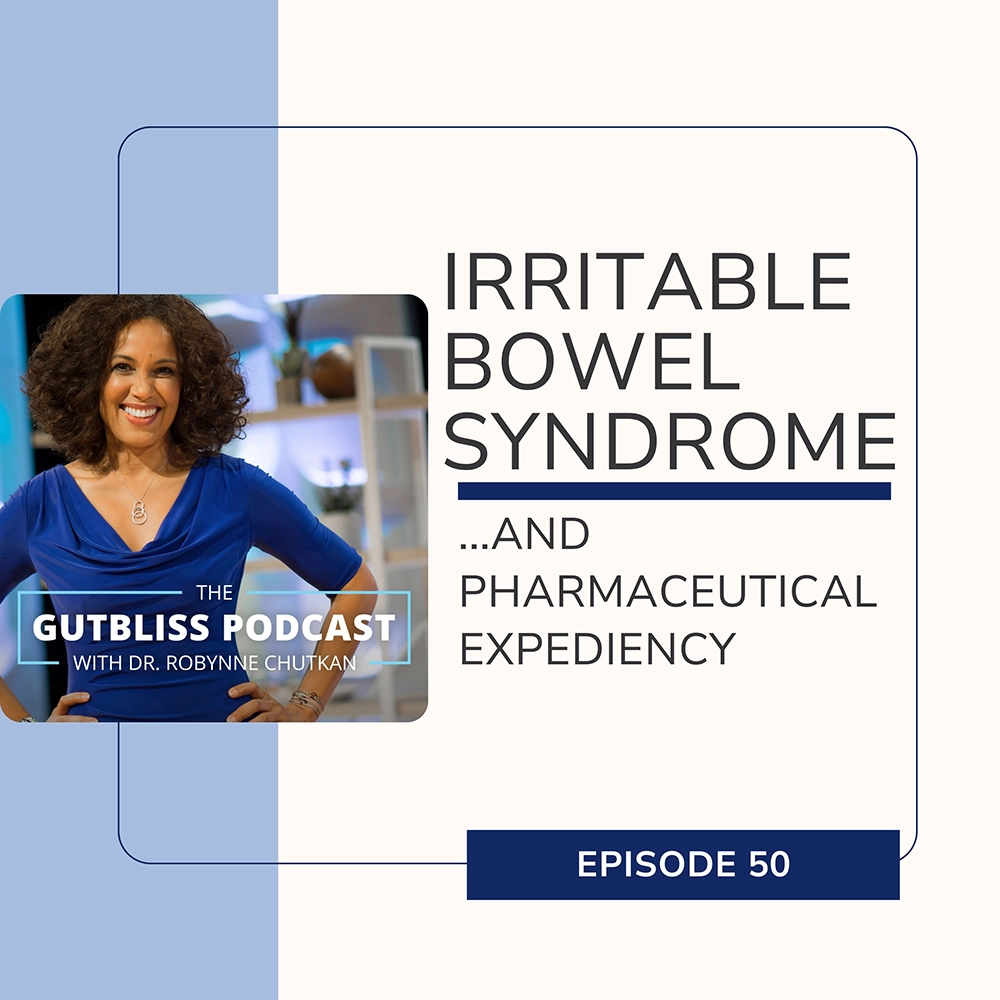Gut feelings and butterflies in the stomach are real sensations rooted in physiology: many of the neurotransmitters that our brain uses are actually made in our gut, and our digestive tract is home to about 500 million nerve cells. We call this 2nd brain in our gut the enteric nervous system. Your gut influences your stress levels, anxiety, mood, and behavior. And your brain influences your gut motility, enzyme secretion in your GI tract, absorption of nutrients through your gut lining, and your microbial balance. The two organs are in constant bidirectional contact, each one profoundly influencing the function of the other.
Thank you for being a part of our community! For the latest in digestive wellness go to https://gutbliss.com/ and follow us on Instagram for more gut health info.
In order to understand why a mouse would kiss a cat – its natural enemy – you have to understand the enteric nervous system; the second brain in your gut.
When I give a talk on the connection between the gut and the brain, I always start with two images: one is a picture of me at the top of a water slide called the Leap of Faith. And the other is a picture of a mouse cozying up to a cat. This little mouse is literally reaching up towards the cat’s mouth, like it wants to give it a big kiss – or get eaten. And these two images tell you a lot about the connection between your digestive tract and your brain. So let’s start with the mouse and the cat.
Cats and mice are natural enemies because of the way they evolved over millions of years. Cats are predatory felines that evolved to hunt and eat small rodents like mice. As a result, mice developed defenses to avoid being eaten by cats – who are the biggest threats to their survival. Mice can smell not just the cat, but specific proteins in cat saliva and cat urine, so if they detect that a cat has been anywhere in the vicinity, they scurry away as quickly as possible. So it is completely unnatural and against their own survival interest for a mouse to be seeking out a cat, as this little mouse is doing in the picture. When I give my lecture on the gut brain connection to the pre-med students at Georgetown and I show them the picture, I always ask if somebody can tell me in one word why the mouse is snuggling up to the cat, and there’s always at least one really smart student in the room who knows the answer. And the answer is: Toxoplasmosis.
Toxoplasma gondii – is the parasite that causes Toxoplasmosis. Toxo infects most mammals, including humans, who can become infected after eating undercooked meat or from exposure to cat feces. Toxo is very, very common, with about 1/3 of the world’s population infected.
Most people – including the more than 40 million in the US who have toxo – are completely asymptomatic. But in infected rodents like mice, toxo causes a behavioral change that makes the mice lose their fear of cats and their aversion to cat odors, and instead makes the mice seek out cats. It does that so that the infected mouse can get eaten and toxo can complete its life cycle. Because despite the fact that toxo can infect humans and mice and virtually all warm blooded animals, it can only reproduce and complete its life cycle in cats. Toxo creates this “fatal attraction” behavior in mice by hijacking a part of the mouse’s brain and actually changing the nerve cells.
And here’s where things get interesting. In humans, toxoplasma infection has been linked with behavioural changes and schizophrenia. One study found an increased risk of traffic accidents and suicide attempts in people infected with Toxo. People with schizophrenia, bipolar disorder, and OCD are all more likely than the general population to have been infected with Toxoplasma.
So here’s an example of a parasite that can infect humans through the gut, and then cause changes in our brain. Changes that are strongly associated with psychiatric disorders. We know that diseases like schizophrenia and bipolar sometimes run in families. But we also know that these are not genetic diseases, even though some people may have a genetic susceptibility, these are not inheritable diseases. So where are they coming from? Well, gut infections like toxo may be part of the explanation. Now, of course, they aren’t the only reason. The line connecting toxo with conditions like schizophrenia is squiggly. It’s not a straight line. But in some people, there seems to be compelling evidence that their infection with toxo and their psychiatric diagnosis are connected.
And while we’re often looking for that one smoking gun explanation, it’s important to realize that most diseases are multifactorial. They are a complex mix of genetics, environmental exposure – including exposure to bacteria, viruses, and parasites, plus diet and lifestyle choices. So an infectious explanation may be one pathway for developing schizophrenia, but traumatic brain injury may be another.
But the point I want to make here is that in the case of toxo, what is going on in the gut is profoundly impacting what is going on in the brain. And we have another example of this with Campylobacter – a bacteria that’s one of the most common causes of foodborne illness. Infecting lab mice with Campylobacter induces anxiety-like behaviour in the mice. And behavioral changes like anxiety can occur in post infectious irritable bowel syndrome after someone has had a foodborne illness like campylobacter. So here again we have another example of an infection in the gut inducing behavioral changes.
Now I want to literally change directions here and talk about the brain-gut connection rather than the gut-brain connection. And that brings me to image #2, which is a picture of me taken about 10 years ago at the Atlantis resort on paradise island in the Bahamas. In the picture I’m at the top of this very long staircase type ladder, and I’m holding on for dear life to the sides of the staircase looking terrified. What you can’t see in the picture is how I’m feeling, but I can tell you – because I remember it like it was yesterday – I was feeling incredibly nauseated, like I was about to vomit and also poo my pants (my swimsuit bottom pants). And no, I didn’t have food poisoning, or any other gut thing going on. What I had was a brain thing going on.
I was about to jump down a very long and steep slide which ended in a glass tunnel that was supposed to catapult me through the middle of a pool filled with sharks. And I was completely convinced that I was going to fly off the slide and fall straight down into the shark tank before I even made it into the tunnel, or that while I was going through the tunnel the glass was going to break and I would be engulfed in water and glass and sharks all at the same time. This Leap of Faith ride was literally my worst nightmare because it combined two of the things that scare me the most: tall heights and being in close proximity to sharks.
But my daughter Sydney, who was about 9 at the time was obsessed with this ride and it combined two of the things she loved the most: tall heights and being in close proximity to sharks. And she had pleaded with me to come on the ride with her, and so I figured that rather than have her harass me every minute of the day for the next 5 days of the vacation about when I was coming on the ride, I should just get it over with on the very first day. So, here I was about to take the plunge. And let me tell you, there’s no turning back on the leap of faith because you climb up this tall ladder, and by the time you get to the top there are dozens of people below you waiting in line, and there’s no way to really make your way back down. The intense fear and anxiety I had about the sharks, the height, the tunnel breaking were sending a direct message from my brain to my digestive tract and affecting my gut motility, my gut enzyme secretion, and even my gut microbiome. And that’s what was causing my nausea, the feeling like I was going to vomit, and the “oh no, I’m going to poo my pants” sensation. So an emotion generated in my brain was wreaking havoc in my gut.
Catecholamines are neurotransmitter hormones that help your body respond to stress. Those catecholamines can increase levels of harmful gut bacteria ten thousand-fold in less than twenty-four hours, and those harmful bacteria can crowd out the healthy bacteria in your gut. In a classic experiment looking at the impact of academic stress on college students, beneficial lactic acid bacterial levels were measured and found to be much lower during high stress periods like exams. When the exams were over and the students were under less stress, the levels of those good bacteria would go back to normal, validating the link between stress and the gut microbiome.
And many of those neurotransmitter hormones, things like serotonin that we refer to as the feel good hormone, are actually made in your gut by your gut bacteria. About 70 to 80% of the total serotonin in your body is located in your GI tract.
And it’s not just neurotransmitters that are present in your gut. Your gut also has lots of nerve cells. How many? Well, not as many as your actual brain, which has billions of nerve cells, but your GI tract has about 500 million neurons, way more than the 60 or 70 million nerve cells in your spinal cord. And we refer to those nerve cells in your digestive tract as the enteric nervous system – the 2nd brain in your gut.
So there’s bidirectional communication between the two organs, with your brain influencing your gut motility, enzyme secretion in your GI tract, absorption of nutrients through your gut lining, and your microbial balance. And your gut influencing production of neurotransmitters, and impacting your stress, anxiety, mood, and behavior.
And this profound connection between your gut and your brain has opened up a whole new field in psychiatry called nutritional psychiatry. Which basically says that what you eat affects what’s going on in your gut, which also affects what’s going on in your brain. Kind of common sense when you think about it, but for decades we’ve completely ignored this idea that what you eat has any effect or impact on things like your mood, cognition or memory. The gut-brain connection has also ushered in another exciting field, which is the field of psychobiotics, which refers to the idea that different probiotics can affect, not just physiological function in parts of your body like your digestive tract, but also brain function and mental health.
So I want to leave you with three takeaways about the gut-brain connection:
- If you struggle with a mood disorder like depression or anxiety, are concerned about your memory, or have a diagnosis like schizophrenia or bipolar disorder; I want you to know that what you eat matters, because it affects what’s going on in your gut, which in turn impacts what is going on in your brain.
- What should you be eating for optimal brain health? The same foods you should be eating for optimal gut health, and at the top of the list are unprocessed high fiber plant foods full of phytochemicals –compounds found in plants that can literally change the chemistry of your brain by modulating your gut microbiome.
- Your GI tract makes a lot of the neurotransmitters that are intimately involved in brain functions like memory and cognition and mood, so making sure your gut is in the best shape possible by eating a healthy diet, plus avoiding ultra processed foods and unnecessary medications is critical for optimal brain function.
So that’s it for this week’s edition of the Gutbliss podcast on the gut brain connection.
Coming up next week I’m going to be talking about the gut-first theory: how diseases that we’ve traditionally thought of as originating in our brains, like Parkinson’s disease might actually begin in our digestive tract.









